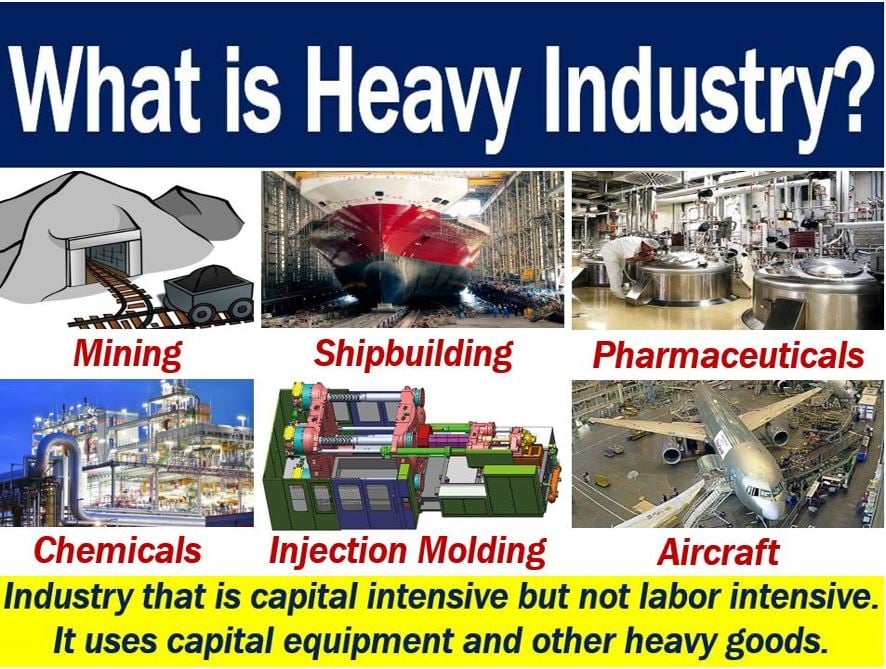Heavy industry refers to businesses that require a huge capital investment in large machinery. For example, the steel industry is part of the heavy industry sector. So too are the automotive, petroleum, and mining industries. Heavy industries use big machines to produce either large objects or raw materials.
The word ‘heavy’ in the term refers to either the items the giant plants produce or the machinery they use.
We also use the term when talking about industries that destroy our forests or pollute the environment.
Heavy industry contrasts with light industry, which does not use large machine tools and giant buildings. Also, light industry companies do not have complex or numerous processes to produce their goods.

Heavy industry in the supply chain
The majority of heavy industries sell their goods to other customers. Those customers are usually also industrial companies. However, the automotive industry is an exception. Car companies sell their goods to end users as well as other businesses.
In many cases, heavy industries form part of the supply chain of other goods. Consequently, they are the first to register rising sales when overall demand in the economy increases. Demand, in economics, refers to a measure of desire to purchase goods or services.
Heavy industry evolution
Since the middle of the 19th century, the heavy industry landscape has changed.
From the mid-19th century to the early twentieth century, heavy industries included the production of artillery and locomotives. Steelmaking, machine tool building, and heavier types of mining were also common during that period.
Since the early twentieth century, the electrical and chemical industries have developed. Both industries use components of heavy and light industry. Aircraft and vehicle makers also use heavy and light industry.
When steel replaced wood, shipbuilding became a heavy industry too.
Heavy industry – an economy’s secondary industry
Heavy industry is a section of a typical economy’s secondary industry. It tends to be more capital-intensive and less labor-intensive than other industries.
You can also buy more heavy-industry goods than light-industry goods for the same amount of money. In other words, for $1 you can buy more steel than smartphones.
